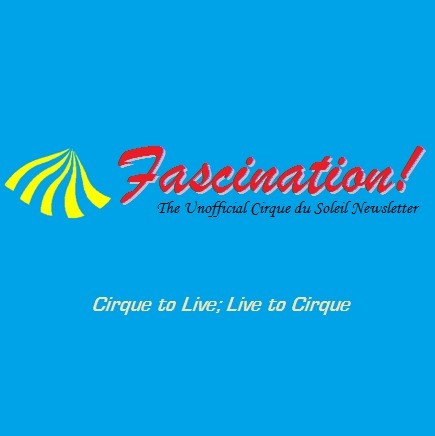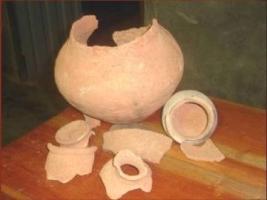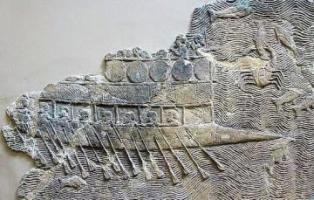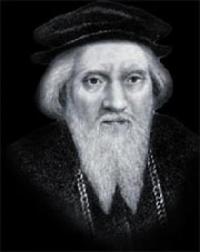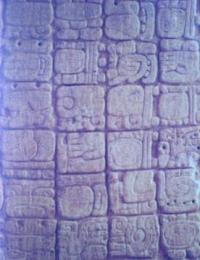Copy Link
Add to Bookmark
Report
AIList Digest Volume 8 Issue 123

AIList Digest Wednesday, 9 Nov 1988 Volume 8 : Issue 123
Seminars:
Towards a Theory of Syntactic Constructions (and more) - Arnold Zwicky
Review of the First Workshop on Artificial Intelligence and Music
Specialization Is For Insects - Tom Knight
Generation and Recognition of Affixational Morphology - John Bear
Why AI needs Connectionism? - Lokendra Shastri
Writing and Reading: the View From the U.K. - John Dixon
SHERLOCK: an Environment for Electronics Troubleshooting - Susanne Lajoie
----------------------------------------------------------------------
Date: Mon, 24 Oct 88 17:05:15 EDT
From: rapaport@cs.Buffalo.EDU (William J. Rapaport)
Subject: Towards a Theory of Syntactic Constructions (and more) -
Arnold Zwicky
UNIVERSITY AT BUFFALO
STATE UNIVERSITY OF NEW YORK
DEPARTMENT OF LINGUISTICS
GRADUATE GROUP IN COGNITIVE SCIENCE
and
GRADUATE RESEARCH INITIATIVE IN COGNITIVE AND LINGUISTIC SCIENCES
PRESENT
ARNOLD ZWICKY
Department of Linguistics, Ohio State University
Department of Linguistics, Stanford University
1. TOWARDS A THEORY OF SYNTACTIC CONSTRUCTIONS
The past decade has seen the vigorous development of frameworks for syn-
tactic description that not only are fully explicit (to the point of
being easily modeled in computer programs) but also are integrated with
an equally explicit framework for semantic description (and, sometimes,
with equally explicit frameworks for morphological and phonological
description). This has made it possible to reconsider the _construc-
tion_ as a central concept in syntax.
Constructions are, like words, Saussurean signs--linkages of linguistic
form with meanings and pragmatic values. The technical problem is to
develop the appropriate logics for the interactions between construc-
tions, both with respect to their form and with respect to their
interpretation. I am concerned here primarily with the formal side of
the matter, which turns out to be rather more intricate than one might
have expected. Constructions are complexes of categories, sub-
categories, grammatical relations, conditions on governed features, con-
ditions on agreeing features, conditions on phonological shape, condi-
tions on branching, conditions on ordering, _and_ specific contributory
constructions (so that, for example, the subject-auxiliary construction
in English contributes to several others, including the information
question construction, as in `What might you have seen?'). The schemes
of formal interaction I will illustrate are overlapping, or mutual
applicability; superimposition, or invocation; and preclusion, or over-
riding of defaults.
Thursday, November 3, 1988
5:00 P.M.
Baldy 684, Amherst Campus
There will be an evening discussion on Nov. 3, 8:00 P.M.,
at the home of Joan Bybee, 38 Endicott, Eggertsville.
=========================================================================
2. INFLECTIONAL MORPHOLOGY AS A (SUB)COMPONENT OF GRAMMAR
Friday, November 4, 1988
3:00 P.M.
Baldy 684, Amherst Campus
Wine and cheese to follow.
Call Donna Gerdts (Dept. of Linguistics, 636-2177) for further information.
------------------------------
Date: Wed, 26 Oct 88 12:04 EDT
From: "TSD::AIP1::\"Len@HEART-OF-GOLD\"%atc.bendix.com"@RELAY.CS.NET
Subject: Review of the First Workshop on Artificial Intelligence and
Music
Date: Wed, 26 Oct 88 12:00 EDT
From: Len Moskowitz <Len@HEART-OF-GOLD>
Subject: Review of the First Workshop on Artificial Intelligence and Music
To: "3077::IN%\"AIList@ai.ai.mit.edu\""@TSD1
Message-ID: <19881026160039.2.LEN@HEART-OF-GOLD>
The First Workshop on Artificial Intelligence and Music was held on August
24, 1988 during AAAI-88. It brought together more than 40 researchers from the
U.S.A, Canada, Belgium, the U.K., and Israel. The workshop was divided into
five sessions: expert systems; tutoring systems and languages; cognitive models
and knowledge representation; neural networks and parallelism; and a final
session covering perception, philosophy, and the symbiotic relationship between
music and artificial intelligence. Many of the presentations included
audio/visual demonstrations.
The workshop was sponsored by AAAI and organized by Mira Balaban (Ben
Gurion University, Israel), Kemal Ebcioglu (IBM Thomas J. Watson Research
Center), Marc Leman (University of Ghent, Belgium), and Linda Sorisio (IBM Los
Angeles Scientific Center).
From an AI perspective, the workshop spanned a wide range of topics
including planning, machine learning, neural networks, tutoring systems,
knowledge representations, languages, parallelism, pattern recognition,
temporal reasoning, design, and expert systems. From a music perspective, the
presenters focused on analysis of tonal and atonal music, composition, music
education, music perception and cognition, performance, automated
accompaniment, and user interfaces.
This year's AAAI had a noteworthy event. Thanks to the AI and Music
workshop and Harold Cohen's invited talk ("How to Draw Three People In a
Botanical Garden," part of AAAI proper), this was the first time, to my
knowledge, that research carried out within a humanities context received
significant attention.
Many of the attendees expressed a desire for a similar workshop at next
year's IJCAI/AAAI gathering. Anyone interested in organizing or assisting next
year's workshop should contact Dr. Ebcioglu (kemal@ibm.com).
Copies of the workshop's proceedings are available from AAAI (445 Burgess
Drive, Menlo Park, CA 94025, U.S.A.) for $20 (U.S.) plus $2.40 shipping and
handling.
A summary of the sessions follows:
Otto Laske (New England Computer Arts Association) delivered an invited
talk. Laske is perhaps the father of the AI/music synthesis and the field he's
dubbed cognitive musicology. He differentiated between traditional musicology
and the developing discipline of cognitive musicology in that the first is
narrowly centered around the artifacts that musical creates, while the latter
seeks to understand music as one of the processes and structures resulting from
man's 'being in the world.' Viewed in this way, the programs we write are
formal speech accounts of an activity (referents to a human activity) but not
that activity. While programs are not music, they can help us to understand
music. Therefore, if I understand Laske's viewpoint correctly, the goal of the
AI/music synthesis is to investigate, within the music framework, how we become
and are an integral part of the world.
The session on expert systems included presentations describing a computer
simulation of perception of musical rhythm based on Lerdahl and Jackendorff's
generative theory of tonal music; a forward-chaining rule-based system that
performs harmonic chord function analysis for tonal music; a system for tonal
composition that learns by reordering its production rule priorities and by
generalizing new rules based on recurring patterns in its histories; and a
"Cybernetic Composer" that uses constraint satisfaction and backtracking to
compose realistic music in four different genre's ('standard' jazz, Latin jazz,
rock, and ragtime). During this last presentation, Charles Ames (Kurzweil
Foundation Automated Composition Project) played a wonderfully entertaining
audio tape of his system performing.
The session on tutoring systems and languages included presentations about
an architecture for a tutoring system to teach musical structure analysis and
melody interpretation; a tutoring system to teach elementary aspects of music
theory and ear training; a method of generating music using linguistic
(syntactic) techniques; a preliminary description of a programming language for
generating and analyzing musical compositions; and a knowledge representation
for tutoring systems using constraint satisfaction embedded in a logic
programming language (applied to teach harmony).
The session on cognitive models and knowledge representation had
presentations on modeling and generating music using multiple viewpoints based
on Markov models; a representation that provides sufficient expressiveness for
analysis of atonal music; and musical composition considered as problem
reduction.
The session on neural networks and parallelism included papers on storing
and processing time-varying musical information in PDP networks; learning of
musical concepts (keys, major/minor, scales, chord expectancies) and cognitive
properties (pitch invariance) using neural nets; and a method of applying the
massively parallel Connection Machine to separate audio sources in polyphonic
music. As part of this last presentation, Barry Vercoe (MIT Media Lab) showed
a videotape of an automatic accompanist that learns from rehearsal and adapts
to a performer's habitual idiosyncracies.
The final, rather eclectic session heard papers on the cross-fertilization
between the fields of music and AI; computer implementations of a cognitive
model of music perception; the use of spatial/visual representations and
improved user interfaces to aid sound analysis; and the need to realize the
limitations of computable functions as descriptions/simulations of music
cognition.
Len Moskowitz
Allied-Signal Aerospace
moskowitz@bendix.com (CSnet) Test Systems Division
moskowitz%bendix.com@relay.cs.net (ARPAnet) Mail code 4/8
arpa!relay.cs.net!bendix.com!moskowitz (uucp) Teterboro, NJ 07608
------------------------------
Date: Thu 3 Nov 88 11:17:04-EST
From: Marc Vilain <MVILAIN@G.BBN.COM>
Subject: Specialization Is For Insects - Tom Knight
BBN Science Development Program
AI Seminar Series Lecture
SPECIALIZATION IS FOR INSECTS
Tom Knight
MIT Artificial Intelligence Lab
(tk@AI.AI.MIT.EDU)
BBN Labs
10 Moulton Street
2nd floor large conference room
10:30 am, Tuesday 8 November
The chaos of the last decade in parallel computer architecture
is largely due to the premature specialization of parallel computer
architectures to support particular programming models. The careful
choice of the correct primitives to support in hardware leads to a
general purpose parallel architecture which is capable of supporting a
wide variety of programming models.
This talk will argue that low latency communication emerges as
the essential component in parallel processor design, and will
demonstrate how to use low latency communication to support other
programming models such as data level parallelism and coherent shared
memory in large processor arrays.
We are now designing a very low latency, high bandwidth, fault
tolerant communications network, called Transit. It forms the
communications infrastructure - the replacement of the bus - for a high
speed MIMD processor array which can be programmed using a wide variety
of parallel models. Transit achieves its high performance through a
interdisciplinary approach to the problem of communications latency.
The packaging of Transit is done using near isotropic density
three dimensional wiring, allowing much tighter packing of components,
and routing of wires on a 3-D grid. The network is direct contact
liquid cooled with Fluorinert. The use of custom VLSI pad drivers and
receivers provides very high speed signalling between chips. The
topology of the network provides self-routing, fault tolerant, short
pipeline delay communications between pairs of processors. And finally,
the design of the processor itself allows high speed message dispatching
and low latency context switch.
------------------------------
Date: Fri, 4 Nov 88 22:44:04 EST
From: finin@PRC.Unisys.COM
Subject: Generation and Recognition of Affixational Morphology - John
Bear
AI SEMINAR
UNISYS PAOLI RESEARCH CENTER
John Bear
SRI International
Generation and Recognition of Affixational Morphology
Koskenniemi's two-level morphological analysis system can be improved
upon by using a PATR-like unification grammar for handling the
morphosyntax instead of continuation classes, and by incorporating the
notion of negative rule feature into the phonological rule
interpreter. The resulting system can be made to do generation and
recognition using the same grammars.
1:00 am - November 7, 1988
R&D Conference Room
Unisys Paoli Research Center
Route 252 and Central Ave.
Paoli PA 19311
-- non-Unisys visitors who are interested in attending should --
-- send email to finin@prc.unisys.com or call 215-648-7446 --
------------------------------
Date: 4 Nov 88 15:49:33 GMT
From: wucs1!loui@uunet.uu.net (Ron Loui)
Subject: Why AI needs Connectionism? - Lokendra Shastri
COMPUTER SCIENCE COLLOQUIUM
Washington University
St. Louis
4 November 1988
TITLE: Why AI needs Connectionism? A Representation and Reasoning Perspective
Lokendra Shastri
Computer and Information Science Department
University of Pennsylvania
Any generalized notion of inference is intractable, yet we are capable of
drawing a variety of inferences with remarkable efficiency - often in a few
hundered milliseconds. These inferences are by no means trivial and support a
broad range of cognitive activity such as classifying and recognizing objects,
understanding spoken and written language, and performing commonsense
reasoning. Any serious attempt at understanding intelligence must provide a
detailed computational account of how such inferences may be drawn with
requisite efficiency. In this talk we describe some work within the
connectionist framework that attempts to offer such an account. We focus on
two connectionist knowledge representation and reasoning systems:
1) A connectionist semantic memory that computes optimal solutions to an
interesting class of inheritance and recognition problems extremely
fast - in time proportional to the depth of the conceptual hierarchy. In
addition to being efficient, the connectionist realization is based on an
evidential formulation and provides a principled treatment of exceptions,
conflicting multiple inheritance, as well as the best-match or
partial-match computation.
2) A connectionist system that represents knowledge in terms of multi-place
relations (n-ary predicates), and draws a limited class of inferences based on
this knowledge with extreme efficiency. The time taken by the system to draw
conclusions is proportional to the length of the proof, and hence,
optimal. The system incorporates a solution to the "variable binding" problem
and uses the temporal dimension to establish and maintain bindings.
We conclude that working within the connectionist framework is well motivated
as it helps in identifying interesting classes of limited inference that can
be performed with extreme efficiently, and aids in discovering constraints
that must be placed on the conceptual structure in order to achieve extreme
efficiency.
host: Ronald Loui
------------------------------
Date: Mon 7 Nov 88 16:51:26-EST
From: Marc Vilain <MVILAIN@G.BBN.COM>
Subject: Writing and Reading: the View From the U.K. - John Dixon
BBN Science Development Program
AI/EDUCATION Seminar Series Lecture
WRITING AND READING: THE VIEW FROM THE U.K.
John Dixon
BBN Labs
10 Moulton Street
2nd floor large conference room
10:30 am, Thursday November 10
********************************************************
* *
* No abstract was available for this presentation. *
* Below is a short biography of the speaker. *
* *
********************************************************
John Dixon is an educational writer and consultant from London,
England, who has been a teacher in an inner-city school in London
as well as a Senior Lecturer in a teacher training college at Leeds.
Dixon is the author of "Growth through English", the major report of
the Anglo-American Dartmouth Seminar in 1966. His writing since then
has included anthologies for school use and a number of books on the
teaching of writing, the most recent of which is "Writing Narrative -
and Beyond".
For many years a member of and then chair of The Schools Council
Committee on English, Dixon has directed research and studies on
Teaching English to the School Leaving Age and has investigated
the effect of the questions asked on university examinations on
the teaching of literature in schools.
------------------------------
Date: Mon 7 Nov 88 16:52:16-EST
From: Marc Vilain <MVILAIN@G.BBN.COM>
Subject: SHERLOCK: an Environment for Electronics Troubleshooting -
Susanne Lajoie
BBN Science Development Program
AI Seminar Series Lecture
SHERLOCK: A COACHED PRACTICE ENVIRONMENT
FOR AN ELECTRONICS TROUBLESHOOTING JOB
Susanne P. Lajoie
Learning Research and Development Center,
University of Pittsburgh
(LAJOIE%LRDCA@Vms.Cis.Pittsburgh.Edu)
BBN Labs
10 Moulton Street
2nd floor large conference room
10:30 am, Tuesday November 15
Sherlock is a computer-based practice environment for teaching
first-term airmen avionics troubleshooting skills. Sherlock's
instructional goals were determined by a cognitive task analysis of
skill differences in this domain. The predominant instructional
strategy is to support holistic practice of troubleshooting rather
than train discrete knowledge skills. Instruction is based on complex
decision graphs of skilled and less skilled plans and actions for each
troubleshooting problem. As a trainee works through a problem Sherlock
observes the quality of decisions the trainee makes and uses that
information to provide the level of hint explicitness necessary at
particular decision points in the problem. In this way, specific
competency building is situated within the troubleshooting context and
is sharpened to the extent that satisfies each individual's needs.
Sherlock was field tested in a controlled study that compared tutored
trainees with a control group that received no extra training other than
"on-the-job" experience. Pre and post tests of verbal troubleshooting
indicated that the tutored group performed better than the control group
on post tests of troubleshooting proficiency. Not only were more
problems solved but there were several indications of emerging
competence over the course of tutoring that demonstrated that trainees
were becoming more "expert-like" in the overall troubleshooting process.
In an independent evaluation the Air Force found the Sherlock treatment
to be equivalent to 47-51 months of "on the job" experience.
Enhancements have been added to Sherlock that could increase its
effectiveness even more. An explicit articulation of expert and
student problem solving traces now exists that could facilitate the
comparison process of different levels of expertise. At the completion
of each problem trainees will be able to interrogate the trace of the
expert problem solution and see why an expert would make a particular
move as well as see the mental models used by an expert to test
different paths in the problem space.
------------------------------------
This research was made possible through the combined efforts of the
following individuals: Alan Lesgold, Jaya Bajpayee, Marilyn Bunzo,
Gary Eggan, Linda Greenberg, Debra Logan, Thomas McGinnis, Cassandra
Stanley, Arlene Weiner, Richard Wolf, and Laurie Yengo, as well as
researchers at AFHRL Brooks, and the Air Force personnel that made our
study possible.
------------------------------
End of AIList Digest
********************










